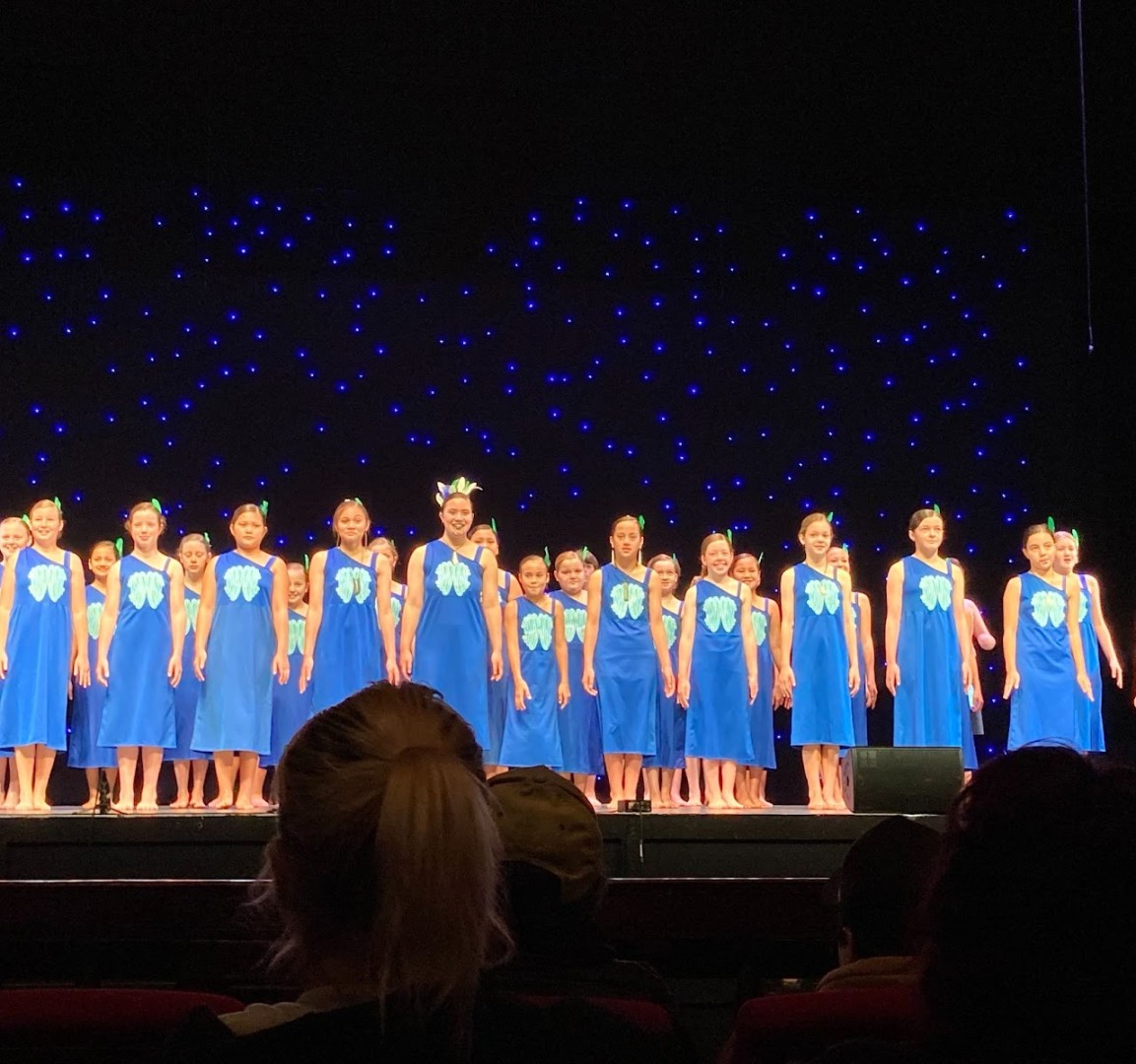Mihi - Rangitāne
Ko Ruahine me Tararua ngā maunga e korowaitia tō mātou kura
Ko Whārite te taumata
Ko Manawatū te awa e rere nei
Ko Kurahaupo te waka e hoe nei
Ko Rangitāne te mana whenua
Ko Ashhurst te kura
Ko mātou o te kura e whakanui i ngā tohu whenua o Rangitāne whānui
Our school pepeha is a way of us acknowledging the landmarks of our place in Aotearoa New Zealand. Te Apiti is recognised in the pepeha of our school as the pinnacle of success and the peak we are striving for due to it being the highest peak in our rohe. We have included the mountains that reside next to our school. The Manawatū river which flows through our area is acknowledged for the contribution it makes to the land which surrounds our school. We are acknowledging Kurahaupo as the waka that brought Rangitāne tangata to the area and the school as Otāngaki, it's te reo Māori translation. The final line allows us as a school to say we acknowledge all the important landmarks of the Rangitāne.
Waharoa


THE CARVED ENTRANCE WAY TO ASHHURST SCHOOL
Erected on 27 April 1990
The entrance way, first proposed to the Ashhurst School Board of Trustees by its Maori Support Group, was erected in consultation with Rangitane as tangata whenua of the area. Rangitane advised the Board through John Bevan Ford who also supported the carver, Murray Green, during the work.
THE CARVER
Murray Green is of Tainui descent. He acquired his skill as a carver as an Access trainee working under the direction of Paki Harrison at Te Awamutu. Murray later tutored in carving at the Waipa Kokiri Arts and Crafts Centre.
THE CARVING
At the base of the carving are descending kotuku, derived from the symbol of the 1990 commemorations. These figures acknowledge the support of the Lotteries Board through the New Zealand 1990 Commission for this project.
The waewae, or sides of the carving, depict female and male figures on the left and right respectively. At one level they are symbolic of the children entering Ashhurst School. The School’s educational purpose is represented by the open book at the centre of the korupe (cross-piece). Also on the korupe are double spiral patterns suggesting partnership between the peoples of New Zealand. The pakura (parallel curved strokes) between the spirals depict the passage of years as the children develop in learning. This is shown at the ends of the korupe, which also symbolise the guardianship of the School.
At another level, the carving also depicts the traditional store of Take and the Kete aronui, or three baskets of knowledge. In that story Tāne, the progenitor of human beings, sought knowledge for them from the heavens. In this he was opposed by his brother Whiro, but Tāne was assisted in his quest by the guarding Huru-tea-a-rangi (white glow of the heavens). She was at home in those regions, and made it easier for Tāne to perform his task. Tāne is depicted on the right, and Huru-tea-a-rangi, watching him, on the left.
It is in allusion to this story, and to the educational role of the School, that Rangitane have given the entrance way it’s name, He kuwaha ki the ketearonui, the door to life’s knowledge.
Ashhurst School Tikanga

Welcoming New Students/Whānau/Staff
Waharoa
Waharoa sessions are weekly transition classes for enroled children and their whānau. Children will attend sessions in the term closest to their 5th birthday. These sessions give children the opportunity to experience time with their teacher and peers and allow them to adjust to classroom learning and routines. Once children have completed their Waharoa sessions, they will then be able to attend two class visits in the two weeks prior to them starting school.
Mihi Whakatau
At the beginning of each term, we celebrate and welcome the arrival of all kaiako hou (new staff), whānau (families) and tauira (students) to our Kura.
Manuhiri (guests), the group you will be a part of, will be seated on chairs on the blue court.
A School representative will be there to ensure you know the process.
Our school's Kaikōrero (speaker) will speak in te reo māori only, and the school will waiata tautoko (sing to support) the Kaikōrero.
All new staff will speak to the school and introduce themselves when this has finished. This can be done in English or te reo māori or any other language they are fluent in. This is an opportunity for any parents to also speak on behalf of their children.
Once all the adults have spoken, the manuhiri group can sing a waiata to tautoko (support) their speakers. This is not compulsory.
Once the waiata has concluded, the Rangatira o te Kura (the school leaders) will approach and greet the children, staff, and parents with a hug, hongi, or handshake.
The Manuhiri (guests) are now part of the school and will join the rōpū (group), and Heath Chittenden will speak to finish the proceedings.
We will all then go back to class and share a snack and drink of water, as sharing kai is the final step in bringing people together. Parents will be invited to the staffroom for this part of the process.
Pōwhiri
Pōwhiri is a traditional māori welcoming ceremony. Pōwhiri at Ashhurst School will be structured in partnership with Rangitāne and guided by their tikanga practices.
In Class Practices
Karakia Whakatimatanga
This karakia was gifted to our kura through the connection between our Palmerston North East Kāhui Ako and Rangitāne. The karakia was composed by Hohepa Sharland and was originally written as a mōteatea (waiata without actions); however, it can be said verbally without singing. Hohepa and Whare Sharland presented this karakia to us through our Kāhui Ako during our Rangitāne Symposium teacher-only day on Friday, June 2nd 2023. As this karakia has been gifted to us as a taonga by Rangitāne, it is a school expectation that we protect and care for this karakia by using it from now on. The purpose of karakia is to set the mauri (aura) for the day and to begin the school day by setting the room up for a sense of noa (peace). Finishing the day with Karakia resets the mauri (aura) and seeks to ensure everyone gets home safe and the mauri in the room is reset. This karakia can be used to start and finish a hui or a school day.
Karakia Kai
This is a simple but effective karakia we can perform to give thanks for the food we are about to eat. Someone or everyone can recite this before eating. The addition of 'mō tēnei rā', which means for this day, covers our kai for the day.
Kapa Haka
Ashhurst School has a kapa haka rōpū, which meets weekly on a Tuesday morning with an instructor. In these sessions, students learn waiata and haka to perform at various events throughout the year, with the main performance being the Te Pae Tamariki Kapa Haka Festival. Kapa Haka is available for students from Years 3 - 8.
Morning Mahi
After our morning karakia, students engage in 'morning mahi'. This program focuses on putting our school values at the forefront of students' minds as they start their learning day. Students are given a range of scenarios and then apply our school values to find suitable solutions. There is also a te reo māori focus within the 'morning mahi programme' and time to practice waiata.
In-class language programme
Students engage in two explicit te reo māori sessions each week. These sessions are designed to increase student's knowledge of the structure of words, phrases and sentences in Māori. Time is also dedicated to ensuring correct pronunciation is modelled. These sessions are progressive and scaffolded to meet students' needs so that they can experience success when learning te reo māori. Teachers also use te reo māori phrases in their daily practice.
Ki-o-Rahi
Ki-o-Rahi is a traditional māori game and stems from the legend of Rahitutakahina and Tiarakurapakewai. Students from Ashhurst School are very fortunate to have been supported in learning this game by Chris Swannell of Rangitāne. The game is often played during lunch as part of our structured games. We also have two competitive Ki-o-Rahi teams, a year 5&6 team and a year 7&8 team, who compete in local competitions. Our year 7&8 teams are the reigning champions. Ki-o-Rahi has been included in the Elite Sports Competition this year, and we are fortunate to host it.
Ashhurst School Tohu

The main compositional element of the tohu/design is the kowhaiwhai pattern called Pūhoro. The Pūhoro is found on the front of a waka (canoe), which embodies the notion of speed, strength and power. This pattern empowers the waka to cut through the water.
In the context of knowledge, the Pūhoro represents the strength of one to attain knowledge, gain intelligence and wisdom, to be tenacious, while showing commitment and respect.
This Pūhoro also represents whakapapa (genealogy) as a continuum of knowledge, disseminated down through the generations. This whakapapa/knowledge represents the dreams and aspirations of people, sung for all to hear and understand in the context of kapa haka.
The kapa haka group is similar to a waka, as a vessel for knowledge. Each participant comes together to strengthen the kaupapa and celebrate kapa haka and its many creative facets.
The colours are from the Ashhurst School colours, but they are lifted in their colour value to reflect the vibrancy of the school.
The title of the tohu comes from the whakataukī (proverb):
"Ehara taku toa, he takitahi, he toa takitini"
My success should not be bestowed onto me alone, as it was not individual success but success of a collective.
Supporters and Sponsors
Parents, please support our local businesses
















Call Direct
Send Email
Visit Website

Call Direct
Send Email
Visit Website

Call Direct
Send Email
Visit Website

Call Direct
Send Email
Visit Website

Send Email
Visit Website

Call Direct
Send Email

Call Direct
Send Email
Visit Website

Call Direct
Send Email
Visit Website

Call Direct
Send Email
Visit Website

Call Direct
Send Email
Visit Website

Call Direct
Send Email
Visit Website

Call Direct
Send Email
Visit Website

Call Direct
Send Email
Visit Website

Call Direct
Send Email
Visit Website

Call Direct
Send Email
Visit Website
